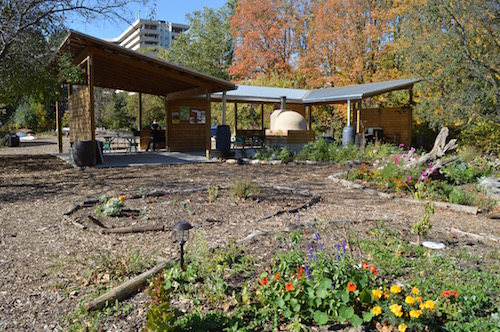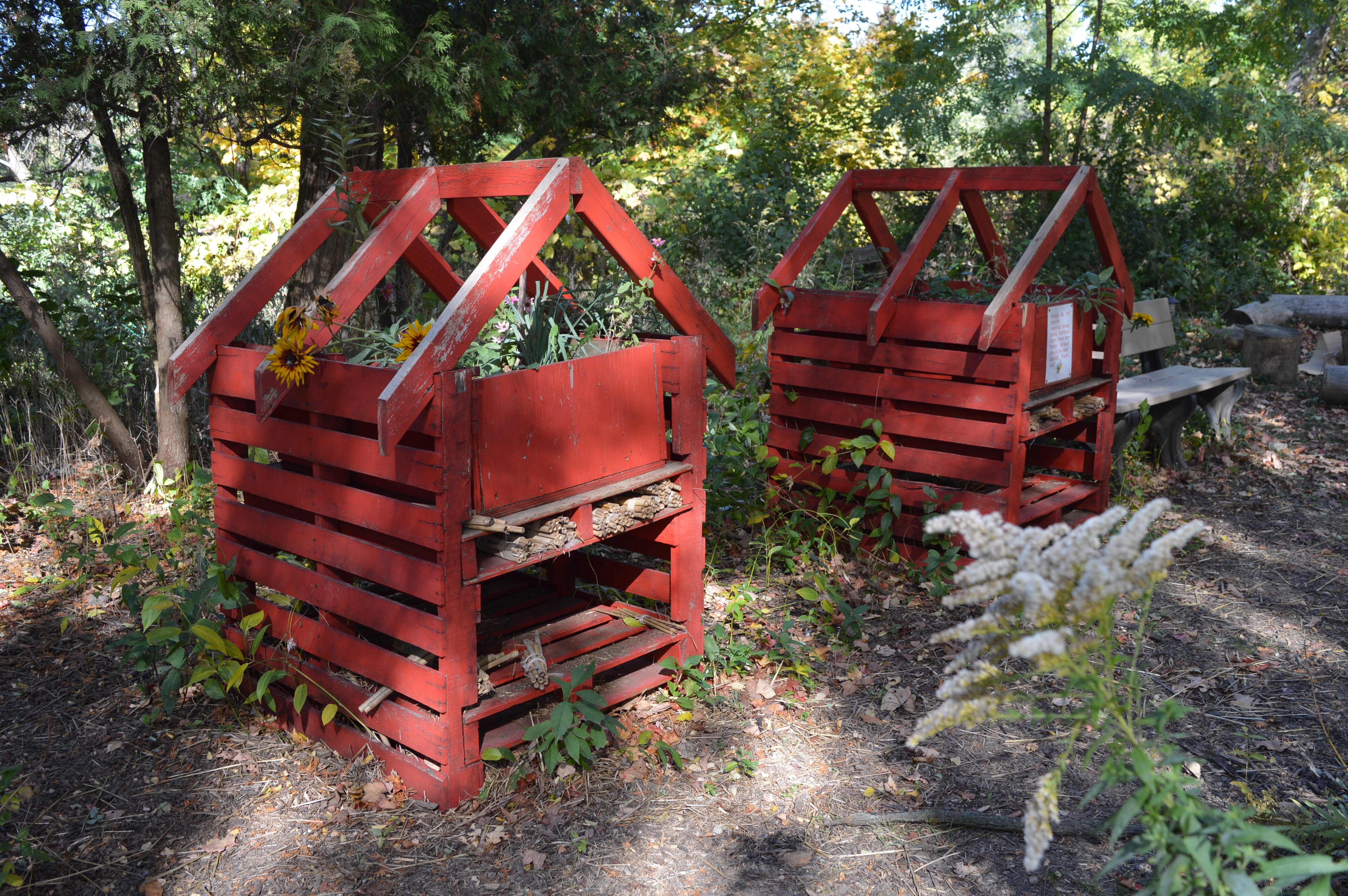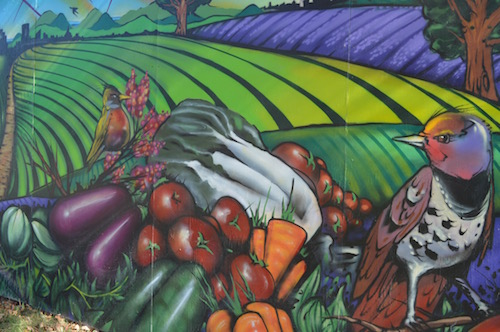Blog by Joanna Chin, Doctoral Student, York University-Environmental Studies
In October, I was fortunate to be given a tour of Black Creek Community Farm by Leticia, the director of a 5.5-acre farm situated in the urban jungle of Toronto. Ron Finley, the “gangsta gardener”, also happened to be on the tour as he was invited to give a speech at York University’s Environmental Studies afterwards. Ron became famous because when he realized that he didn’t have access to fresh food at any of the fast food outlets in his neighbourhood, he planted some mustard greens, carrots, bananas and tangerine trees on his curbside and almost got arrested because his neighbour phoned the police. Watch Ron’s TED Talk here. Ron commented that it’s amazing that he gets to travel around the world and gives speeches about what he terms food “un-justice” but at the same time we should question the world we live in when growing food outside your house is seen as unconventional and garbage strewn on the streets is normalized.

Black Creek Community Farm. Image by Dr. Gabor Sass
For Leticia, the Jane and Finch neighbourhood had a unique set of challenges in their highly racialized community with one of the highest poverty rates in the City of Toronto. There were undercover cops that patrolled the local grocery stores and mothers were forced to empty their bags in front of family and other customers. There was even a situation where a mother was interrogated for three hours because a security guard believed that she stole an apple. Research conducted showed that a healthy food basket in the Jane and Finch neighbourhood was more expensive as compared to other higher-income communities.

Black Creek Community Farm. Image by Dr. Gabor Sass
Staff and community residents at the farm envisioned their project as an eight-acre farm park that has a woodland ecosystem, a rarity in the urban landscape in Toronto that has come to life since 2012. The not-for-profit’s goal was to provide green space and fresh food for people in their community. A harvest share is accessible for Jane and Finch residents that correspond to their income at four different price points. Money was a big challenge for the farm and staff originally took the produce to sell at a farmers’ market in downtown Toronto to higher-income people, which received a backlash from their community.
One of the most important lessons they learned was community engagement needs to be a process that is meaningful and not just a checkbox to be ticked. A strategy they use to get people in their community involved is to compensate people with money for their time; they use an honorarium and also add a line for volunteer expenses to their budget. Their steering committee consists of a high proportion of community residents. Leticia who also happens to be a mom and a resident of the Jane and Finch neighbourhood expresses that there are certainly a lot of challenges for their six-person staff at the farm but there are so many opportunities and benefits with the work that they do. For me, the Black Creek Community Farm is a successful example of the reconciliation of the social, economic and ecological imperatives in sustainable development. To learn more about the farm, click here.

Black Creek Community Farm. Image by Dr. Gabor Sass
Stay tuned for my next post in this special blog series.
Check out my previous blog posts from the series:
- Log in to post comments



CRC Comments